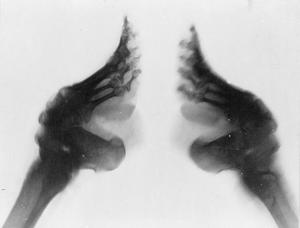Many cultures have mutilated their bodies in the name of beauty. The recent obsession with tanning salons and plastic surgery are proof. However, while butt implants and lip injections seem extreme, nothing compares to the pain and effort that accompanies foot binding.
Foot binding began in china during the Tang Dynasty in the tenth century. Tang dancers would bind their feet to keep them small, allowing them to make the light steps required of such dancing. What began as a way for these women to impress a barbarous emperor quickly spread among the upper class. Eventually, foot binding spread throughout the entire feudal system. The foot binding tradition lasted for a thousand years. Like all things, it evolved, and at its end, it was much more debilitating than at its birth.
Because it was such a cruel custom, there were several movements to end foot binding, but all attempts were quashed until 1911. It was at this time that the Republic of China government took control. They were very aware that the western world looked at foot binding as a cruel and barbarous custom, so they made it illegal with a penalty of death. You might wonder why such a painful institution could last so long, but there were many factors that contributed to lifespan of this custom.
As I’ve already said, foot binding began as a way for dancers to impress the emperor, and it quickly spread through the upper classes. Because foot binding handicapped women, they were unable to work or even walk for any distance. Thus foot binding was a double-edged sword. It was a status symbol because only the wealthy could afford to house women that weren’t able to work the fields or help around the house.
It was also a way for men to have power over their women. As time past men started to insist on marrying women with bound feet. Women with the smallest feet married well. For this reason, the poorer families began to bind feet. In the end, only the poorest girls had unbound feet. These girls became field workers and house servants.
The process of foot binding was excruciating. It began when the girl was between four and six years of age. First the feet were soaked in a solution of herbs and animal blood. This makes the dead skin fall off. Next the toenails were clipped as short as possible. This was supposed to prevent ingrown toenails and aided in preventing infections. The girl would then have her feet massaged. Bandages, ten feet long by two inches wide, would be soaked in the same blood and herb mixture.
They would then be wrapped tightly around the foot pulling the four smaller toes to the heel. As the bandages dried, they would pull even tighter. The bandages were removed every two to four days, and the process was repeated. In most cases, the four smaller toes would break within the first year. This process would continue for another ten years, though some continued much longer. The desired result was a three inch foot, known as a golden lotus.
Not only was foot binding painful, but it was also dangerous. Blood poisoning, caused by infected ingrown toenails, was one possible side effect. Often a girl’s toes would rot and fall off. Many girls also died as a result. Walking on the misshapen feet caused an unsteady sway known as a lotus gait. As women aged, broken bones became a risk as the danger of falling increased. Even today, the last remnants of a different age still suffer the consequences.
While many people felt that men desired bound feet, the reality was that most men never even saw bare feet. Women often kept them hidden in their shoes. The illusion of the beautiful golden lotus had to be kept. While women thought of it as a mark of beauty, men felt that a woman with perfect lotus feet were strong enough to bear the pain of childbirth and could produce many sons.




